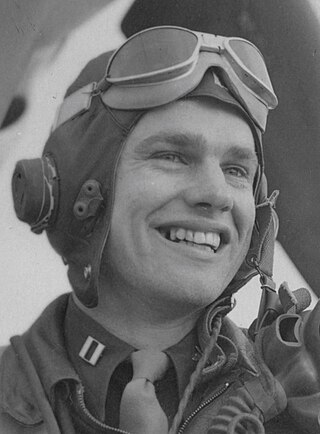
Clarence Emil "Bud" Anderson is a retired officer in the United States Air Force, a triple ace of World War II, and the highest scoring living American fighter ace. During the war he was the highest scoring flying ace in his P-51 Mustang squadron. Towards the end of Anderson's two combat tours in Europe in 1944 he was promoted to major at 22, a young age even for a highly effective officer in wartime. After the war Anderson became a well regarded fighter test pilot, and a fighter squadron and wing commander. He served his wing commander tour in combat in the Vietnam War. He retired as a full colonel in 1972, after which he worked in flight test management for McDonnell Douglas. A member of the National Aviation Hall of Fame, Anderson has remained a sought-after speaker at aviation and military events well into his 90s.

George Earl Preddy Jr. was a United States Army Air Forces officer during World War II and an American ace credited with 26.83 enemy air-to-air kills, ranking him as the top P-51 Mustang ace of World War II and eighth on the list of highest scoring American aces.

Jagdgeschwader 300 was a Luftwaffe fighter-wing of World War II. JG 300 was formed on June 26, 1943 in Deelen as Stab/Versuchskommando Herrmann, from July 18, 1943 as Stab/JG Herrmann and finally renamed on August 20, 1943 to Stab/JG 300. Its first Geschwaderkommodore was Oberstleutnant Hajo Herrmann.

The Focke-Wulf Fw 190 Würger was used by the Luftwaffe during the Second World War in a variety of roles. Like the Messerschmitt Bf 109, the Fw 190 was employed as a "workhorse", and proved suitable for a wide variety of roles, including air superiority fighter, strike fighter, ground-attack aircraft, escort fighter, and operated with less success as a night fighter. It served on all the German fronts: Eastern Front, Western Front, North African Campaign and the Defence of the Reich.

Klaus Mietusch was a German Luftwaffe military aviator and fighter ace during World War II. He is credited with 72 aerial victories achieved in 452 combat missions. This figure includes 15 aerial victories on the Eastern Front, and further 57 victories over the Western Allies, including 13 four-engined bombers.

William Thomas Whisner Jr. was a career officer and pilot in the United States Air Force, retiring as a colonel with 30 years of military service. He was a fighter ace with Army Air Forces over Europe in World War II and a jet fighter ace with the Air Force in the Korean War.
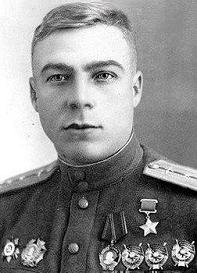
Alexander Sergeyevich Kabiskoy was a Soviet Air Force major, flying ace and Hero of the Soviet Union. Awarded the title on 1 July 1944 for his initial victories, by the end of the war his tally consisted of 16 solo aircraft shootdowns plus one aerostat. Postwar, he continued to serve in the Air Force and died in a flying accident in 1950.

Glenn Emile Duncan was a career officer in the United States Air Force and one of the leading aces of Eighth Air Force in World War II in Europe and the top ace of the 353rd Fighter Group. Duncan was credited with 19.5 victories, one probable victory, and seven damaged German aircraft. He also destroyed at least nine enemy aircraft on the ground, while flying P-47 Thunderbolts with the 353rd Fighter Group. He flew combat missions in the P-47 Thunderbolts and P-51 Mustangs in Europe.
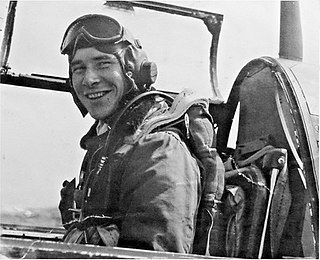
Leonard Kyle Carson Sr. was an American fighter ace and a colonel in the Air Force. During World War II, he was the highest scoring ace of 357th Fighter Group and one of the top Air Force aces of the Eighth Air Force, with 18.5 aerial victories.

Robert William Foy was a United States Army Air Forces fighter pilot and triple-ace who was credited with 15 aerial victories during World War II.
Wayne K. Blickenstaff was a highly decorated United States Army Air Forces lieutenant colonel. He was a flying ace credited with 10 aerial victories, including five in a single day, for which he was awarded the Distinguished Service Cross during World War II.
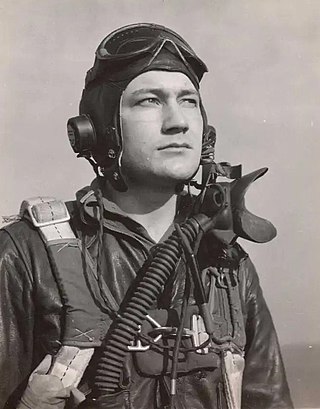
Raymond Henry Littge was an American flying ace in the 352nd Fighter Group during World War II, who was credited with 23.5 aerial victories.
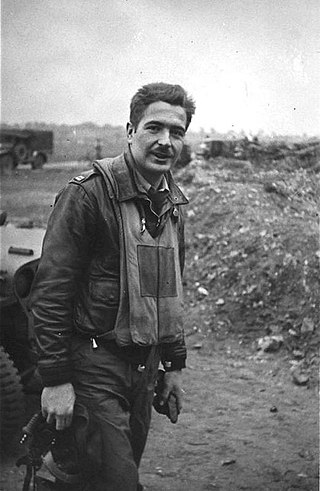
William Timothy Halton was a United States Army Air Force fighter ace in the 352nd Fighter Group who was credited with shooting down 10.5 aircraft during World War II. He was killed in action in 1952, during the Korean War.
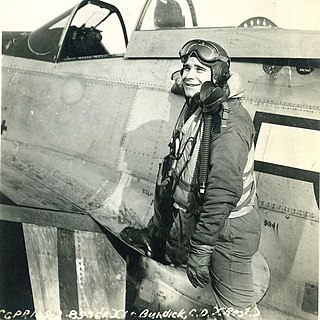
Clinton DeWitt Burdick was an American flying ace in the 356th Fighter Group during World War II. He was the son of American World War I flying ace Howard Burdick, who was credited with eight aerial victories.

Fred Russ Haviland Jr. was an American flying ace in the 355th Fighter Group during World War II, who was credited with 6 aerial victories.
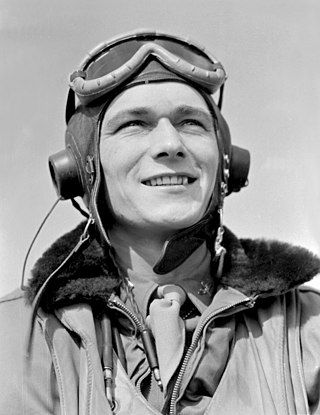
Donald Septimus Bryan was an American flying ace in World War II, who was credited with 13 aerial victories while serving with the 352d Fighter Group.

Leroy Adolph Schreiber was a fighter ace in the United States Army Air Forces. During World War II, he was credited in destroying 12 enemy airplanes, before being killed in action in April 1944.
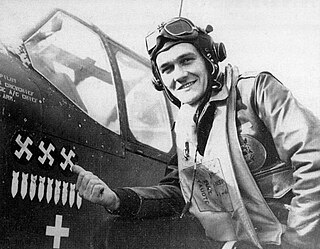
Donald Harlow Bochkay was an American fighter ace in the United States Army Air Forces. During World War II, he was credited in destroying 13 enemy airplanes in aerial combat, including two jet-powered Messerschmitt Me 262s.
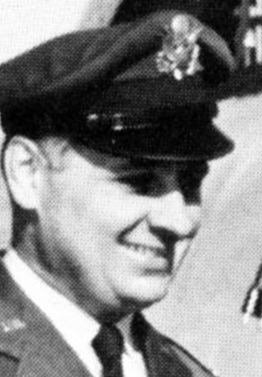
Glennon Timothy Moran was a brigadier general in the Missouri Air National Guard. During World War II, he was a flying ace credited with 13 aerial victories.



















